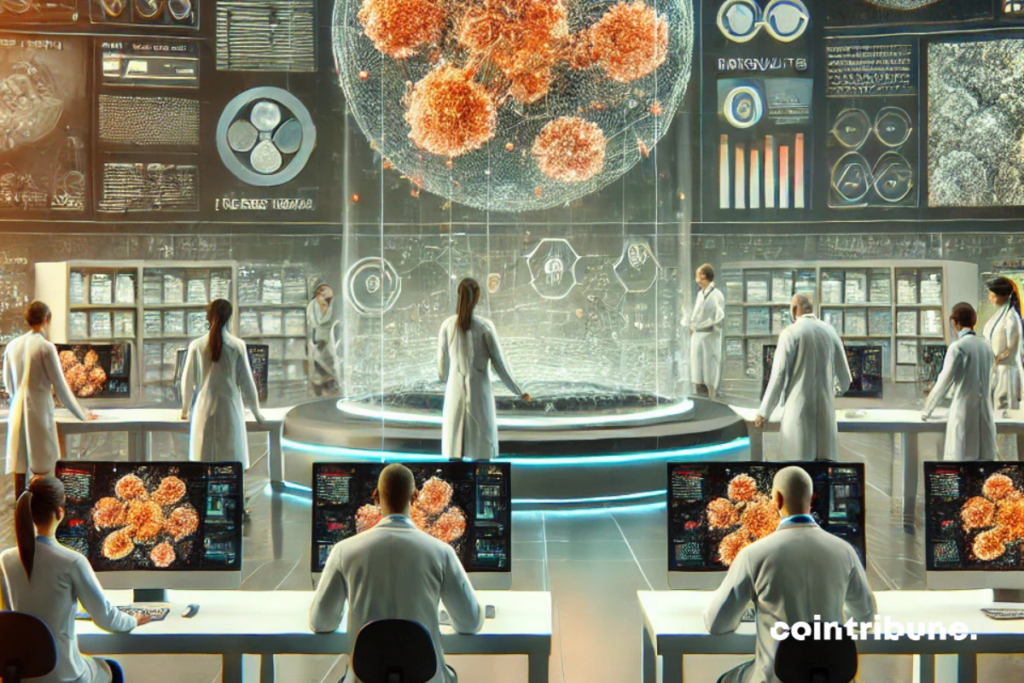15:00 ▪
5
min reading ▪ acc
Artificial intelligence (AI) is gradually reshaping the contours of modern medicine, but a breakthrough could change cancer diagnosis forever. The CHIEF model, developed by Harvard Medical School, has just reached a historic milestone. It is able to detect several types of cancer with an accuracy of 96% and is positioned as one of the most promising tools for improving early diagnosis and assessing prognosis. Faced with the growing challenges of oncology, this model opens up new perspectives for cancer research and treatment.

Revolutionary AI for cancer detection
The AI revolution in healthcare is underway. Indeed, the CHIEF (Clinical Histopathology Imaging Evaluation Foundation) AI model developed by researchers at Harvard Medical School was designed to excel in the detection and prognosis of 19 different types of cancer. With training based on 44 terabytes of data from 15 million unlabeled images and 60,000 whole tissue images, CHIEF has demonstrated outstanding results. According to the researchers, this AI achieves “up to 96%” accuracy in identifying cancer, outperforming current AI methods by more than 36% in some cases. “Our ambition was to create a versatile AI platform capable of evaluating a wide range of tasks related to cancer assessment,” explains Professor Kun-Hsing Yu, lead author of the study.
In addition to its detection capabilities, CHIEF offers accurate predictions of patient survival rates and successfully differentiates those who have a higher chance of survival from those who are at risk. By testing the model on more than 19,400 images from 32 independent databases around the world, the researchers were able to evaluate CHIEF’s performance on a global scale. The model is not limited to detecting the presence of cancer. It can also identify the origin of tumors, characterize molecular profiles and predict patient response to treatment.
Revolutionary perspectives for oncology
One of the most innovative aspects of the CHIEF model is its open source nature, which allows the entire scientific community to adopt and improve it. So the Harvard researchers have opened access to the code on Github, offering doctors and researchers the chance to contribute their own data to refine the model’s predictions. This collaborative approach could accelerate diagnostic progress, especially for rare diseases or premalignant tissues. “Our model has proven to be very useful for a number of tasks related to detection, prognosis and treatment response,” confirms the Harvard team.
However, despite these advances, researchers are still aware of the current limitations of the model. CHIEF has not yet reached its full potential in assessing cancer aggressiveness or predicting the effects of innovative treatments. To go further, researchers count on enriching databases and developing new training methods. The future of oncology seems increasingly tied to artificial intelligence, and collaboration between global laboratories could further improve the accuracy and efficiency of models like CHIEF.
With CHIEF, Harvard is pushing the boundaries of what artificial intelligence can achieve in cancer diagnosis and treatment. The implications for the future are huge: earlier detection, more targeted treatment and a better understanding of disease mechanisms. While the road to widespread clinical adoption is still strewn with obstacles, CHIEF’s ability to scale through scientific collaboration suggests an optimistic outlook for patients and healthcare professionals. This model could become one of the pillars of the fight against cancer in the coming years if it is well controlled according to WHO recommendations.
Maximize your Cointribune experience with our “Read and Earn” program! Earn points for every article you read and get access to exclusive rewards. Register now and start reaping the benefits.
A graduate of Sciences Po Toulouse and holder of the blockchain consultant certification issued by Alyra, I joined the Cointribune adventure in 2019. Convinced of the potential of blockchain to transform many sectors of the economy, I made a commitment to raise awareness and inform the general public about this ever-evolving ecosystem. My goal is to enable everyone to better understand blockchain and take advantage of the opportunities it offers. Every day I try to provide an objective analysis of current events, decipher market trends, convey the latest technological innovations and put into perspective the economic and social problems of this ongoing revolution.
DISCLAIMER OF LIABILITY
The comments and opinions expressed in this article are solely those of the author and should not be considered investment advice. Before making any investment decision, do your own research.

